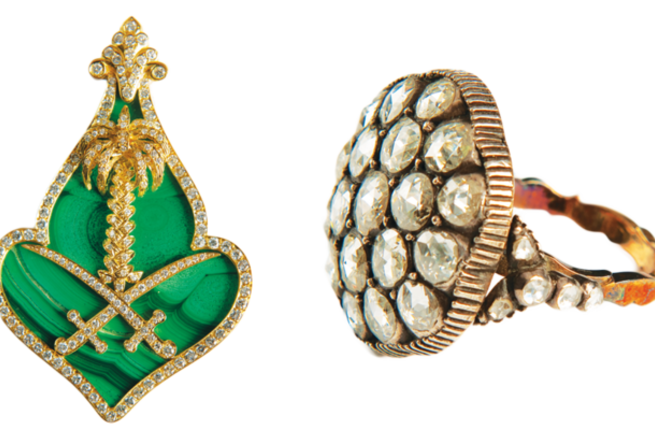RJ Market Watch
Saudi Jewels in Dubai, That’s a First

More than 300 priceless items of jewellery from Saudi Arabia, from Bedouin belts to the brooch of a princess, went on display for the first time in Dubai this weekend, telling the story of the Arabian Peninsula as a crossroads of civilizations and influences.
The pieces in “Hidden Treasures: Jewelry from the Kingdom of Saudi Arabia” represent just a fifth of the collection that the Art of Heritage group in Riyadh has been assembling and preserving for more than 30 years, comprising artwork, crafts and objects that reflect the history and lifestyle of various Saudi tribes and regions since the 19th century. With another collection from Art of Heritage being exhibited in Bahrain until May, there is talk about its pieces forming the basis of a museum.
“You’ll get to see just how diverse and varied Arab culture and identity is, and how each piece is an exchange and an interpretation of places, ideas and customs,” Pramod Kumar KG, the curator of the exhibit, said at Thursday’s opening in the Dubai Design District. The exhibit was organized by the French jewelry design school L’Ecole Van Cleef & Arpels.
Each piece, with exquisite details, tells the story of identity and diversity. While the pieces were worn by women in Saudi Arabia, they reflect influences from all over — from coiled, Celtic-style bangles to abstract African designs, Egyptian snake-design bracelets, and shimmering cascades of Indian and Austrian coins. “From the works of the pilgrims that came to Makkah and stayed on and created different crafts … to the goods and influences from the trade routes that passed through, to the newer styles and creations by designers in the Kingdom, the Art of Heritage Museum, when it opens, will be one of a kind,” said Kumar KG.
Art of Heritage was established as a cultural trust, and its objects include jewelry, textiles and garments, carpets, furnishings, ethnographic material, wooden doors, books and manuscripts, maps, photos, audio and video recordings, and printed ephemera.
The trust aims to promote research and study while fostering the revival of Saudi art, craft and culture among newer generations.
Since its establishment in 1986, the collection continues to expand under the guidance of its board, led by Princess Sara Al-Faisal bin Abdul Aziz, Princess Moudi bint Khalid, Princess Haifa Al-Faisal and Princess Basma bint Majid bin Abdul Aziz.
The exhibit demonstrates that besides their role as decorative objects, women’s adornments tell a vast story of connections that reached the very heart of Arabia and amalgamated with existing traditions. “We also wanted to show how Arab culture, as retold through jewelry, is more than just an Islamic culture; it’s very rich, very diverse and very old,” said Kumar KG.
A pair of unique gold tasseled earrings from 1920 illustrates the amount of intricate detail that went into Egyptian-inspired design: A tipped hook with lower registers of filigree, pearl circlets, bezel-set stones, and a conical middle with delicate floral and crescent-shaped tassels embedded with turquoise and ending in dangling pearls.
Traditionally, turquoise stone has been associated with providing protection against the “evil eye” or hasad (envy), and the pearls with femininity and eliteness.
A 1940 ring of gold, silver and diamonds that once belonged to a daughter of the founder of Saudi Arabia, King Abdul Aziz, is an example of the early modern influence of Europe on the Kingdom, with diamonds as a stone of choice instead of the more commonly used coral, turquoise or glass. The ring is also a design innovation with its use of multiple gem setting styles.
A necklace from 1950 of silver, coins, glass and cotton, known as Iqd, has three cylindrical charm pendants that often carried verses from the Holy Qur’an as protection for the wearer.
Connected to red glass beads with dangling tiny silver tassels, the Maria Theresa Thaler coins, with an image of the empress, were renowned worldwide for their purity of silver, and so were frequently used in jewelry across the Arab world.
Another royal piece that is sure to capture the attention of anyone who sees it is a 1970 brooch that was exclusively designed and gifted to Princess Ceeta Al-Dammer, wife of the late King Khalid. The country’s emblem of crossed swords topped by a date palm, adopted in 1950, is made of gold and diamonds, and is mounted on a green malachite, a color that symbolizes paradise, life and hope in Islam.
Courtesy: Albawaba


















You must be logged in to post a comment Login